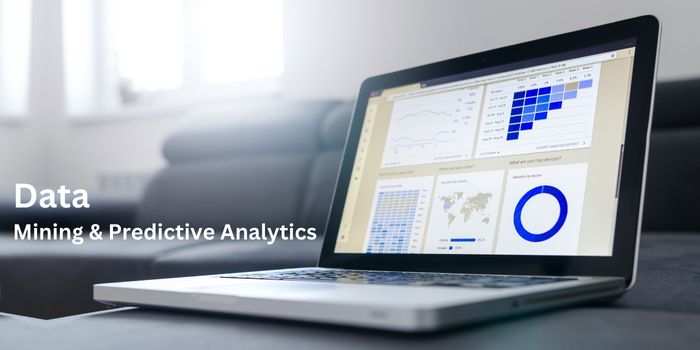Data warehousing for data mining and predictive analytics
Data warehousing has been a critical component of organizations’ technology infrastructure for several decades. It has enabled organizations to store vast amounts of structured and semi-structured data in a centralized location, facilitating data analysis and decision-making. With the advancement of technology and increasing availability of data, organizations are leveraging data warehousing for more sophisticated data analysis techniques, including data mining and predictive analytics.
Data mining is the process of discovering hidden patterns and relationships in large datasets. Predictive analytics, on the other hand, is the use of data, statistical algorithms, and machine learning techniques to identify the likelihood of future outcomes based on historical data. Both techniques require access to large amounts of data, which is where data warehousing comes in.
The Importance of Data Warehousing for Data Mining and Predictive Analytics
Data warehousing provides a centralized repository for data, making it easy for organizations to access, manipulate, and analyze large amounts of data. Without a data warehouse, organizations would have to collect and process data from disparate sources, which can be time-consuming and resource-intensive. Furthermore, data warehouses are designed to store data in a highly structured format, making it easier for organizations to use advanced data analysis techniques such as data mining and predictive analytics.
Another advantage of Cloud data warehousing for data mining and predictive analytics is that it enables organizations to store historical data, which is critical for identifying trends and patterns over time. This historical data can be used to develop predictive models that can help organizations make informed decisions and take proactive measures to address potential issues.
Data Warehousing and Data Mining Techniques
Data warehousing and data mining are complementary technologies that are used together to analyze large amounts of data. Cloud data warehousing provides the infrastructure for storing and organizing data, while data mining provides the tools for analyzing that data. The following are some common data mining techniques that organizations use in conjunction with data warehousing:
Association rule learning
This technique is used to identify relationships between items in a dataset. For example, an association rule learning algorithm might identify that customers who purchase a specific product are also likely to purchase another product.
Clustering
This technique is used to group similar items together based on their attributes. For example, a clustering algorithm might group customers together based on their purchase history.
Classification
This technique is used to predict a categorical outcome based on a set of inputs. For example, a classification algorithm might be used to predict whether a customer is likely to churn based on their behavior and demographics.
Regression
This technique is used to predict a continuous outcome based on a set of inputs. For example, a regression algorithm might be used to predict the sales of a product based on historical sales data.
Data Warehousing and Predictive Analytics
Predictive analytics is the use of data, statistical algorithms, and machine learning techniques to identify the likelihood of future outcomes based on historical data. Predictive analytics can be used in a variety of applications, including customer churn prediction, fraud detection, and sales forecasting. Data warehousing provides the infrastructure for storing and organizing data, which is critical for predictive analytics.
One of the key benefits of using Cloud data warehousing for predictive analytics is that it enables organizations to store and access large amounts of historical data. This historical data can be used to develop predictive models that can help organizations make informed decisions and take proactive measures to address potential issues.
Furthermore, Cloud data warehousing makes it easier for organizations to integrate data from disparate sources, which is critical for predictive analytics. Predictive models often require data from multiple sources, such as customer demographic data, purchase history, and behavioral data.
Another advantage of using data warehousing for predictive analytics is that it enables organizations to automate the predictive modeling process. Once a predictive model has been developed, it can be integrated into the data warehousing environment, allowing organizations to generate predictions on a regular basis without the need for manual intervention. This can help organizations to make better decisions, faster, and with more accuracy.
Conclusion
Cloud data warehousing and predictive analytics are complementary technologies that can help organizations to make better decisions by providing insights into their data. By using Cloud data warehousing to store and organize large amounts of data, organizations can access the data they need to develop predictive models that can help them make informed decisions. With the increasing availability of data, organizations are leveraging data warehousing and predictive analytics to gain a competitive advantage and make more informed decisions.
Overall, Data warehouse solutions for data mining and predictive analytics are a critical component of organizations’ technology infrastructure. By leveraging data warehousing, organizations can make the most of their data, enabling them to make informed decisions and stay ahead of the competition.















